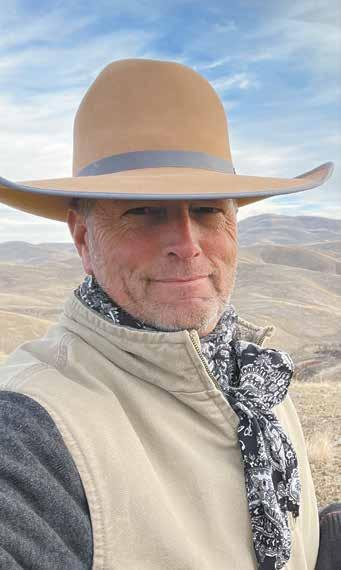Winter Webinar January 2022 “Rangeland Economics 101”
By Dan N. Harmon, NVSRM President
Just when we thought “virtual” meetings might be behind us, the winter season and a new Covid variant had different plans. As a result we were back to seeing all our friends and associates on little computer screens during the 2022 Winter Webinar held by the Nevada section of the Society for Range Management (SRM). This year’s winter meeting theme was the economics of rangelands, a topic that is sometimes overlooked in the world of ecological research, even though it is often the foundation of many critical management decisions we make. From the natural resources that livestock and wildlife rely on, to the business of conservation, rangelands are an industry unto themselves and can support whole communities. While the relative value of any goods or services are in a constant flux, dictated by society, at any time and place, the intrinsic value of “healthy” rangelands is something we can all agree on. Understanding valuation is extremely important for landowners and managers to assess trade-offs when making decisions. We had an amazing group of presenters who kindly volunteered to speak to us about their work. Our first presenter was Dr. Tom Harris, who some have described as the rangeland economics “guru” at the University of Nevada, Reno (UNR). His many years
of experience have provided great insight into the unique qualities of a state like Nevada which has so much public land, and the associated opportunities and challenges. He explained that because Nevada is 81% federal land various economies such as grazing, mining, or other land-based revenues, can be strongly affected by Bureau of Land Management (BLM) policies. Dr. Harris presented an economic study (2006) on the value of Animal Unit Months (AUMs) in Elko County. He included all the direct and indirect values of ranch production. Based on 847,058 AUMs, he estimated a total economic impact of $125 million, which equals about $148 per AUM. He also presented a study that modeled the losses from decreases in AUMs for a medium sized (700 head) cattle operation. The researchers determined that a 50% decrease in AUMs led to unsustainable losses and operation closure. Dr. Harris also presented statistics on mining in Nevada. He explained that in communities like Eureka County, mining makes up over 75% of their employment. In the Elko and Eureka Counties, his research (2006) estimated that total direct and indirect economic impacts from mining equaled $2.9 billion. Our next presenter was Mary Jo Foley-Birrenkott, the Director of Membership and Outreach for the
Mary Jo FoleyBirrenkott
parent SRM. She updated us on the new program SRM has developed and premiered at this year’s annual meeting in Albuquerque, NM- the Good Grazing Makes Cent$ (GGMC) program. It will provide a venue for producers, researchers, and land managers to communicate effectively. There are three main components. First is informational resources, such as monthly e-newsletters with content driven by members, and videos created by experts in the field and other usable information formats. Future content may include podcasts, workshops, and even field tours. The second component is an interactive forum on the program’s Facebook group to foster live content discussions. The third component is the benefit of joint membership with livestock associations. Joining this program gives you SRM and GGMC membership resources as well as access to participating livestock associations. For more information, please visit https://goodgrazing.org. Dr. Garth Boyd, with the Context Network, gave a presentation on rangelands and carbon credits. This topic has gained a lot of attention these days, and as Garth explained, aspects of it can seem surreal. With Nevada being one of the driest states, there are some real challenges to soil carbon sequestration. He explained that agriculture, which contributes roughly 10% of CO2 emissions, is one of the only sectors that can also contribute to CO2 emission solutions by sequestering carbon into the soil. Soil carbon sequestration in agriculture is a naturebased solution that is increasingly important due to its potential scale, cost-competitiveness, and other advantages over alternatives. Carbon sequestration is one more reason why managing for less cheatgrass and more perennial grass is so critical. Garth presented a metanalysis of 93 studies that found, on average, soil organic carbon increased 39% when annual cropland was converted to perennial grassland. By maintaining perennial grass and shrublands, rangeland soils can be a significant reservoir of organic carbon. This carbon sequestration can become a commodity on the carbon market. A carbon credit equals one metric ton of CO2 that has been reduced, avoided, or sequestered. The current market offers around $15 per credit (ton); however, with zero CO2 emission goals made by many large companies like Microsoft, who purchased every
16 APRIL 2022
The Progressive Rancher
www.progressiverancher.com


















